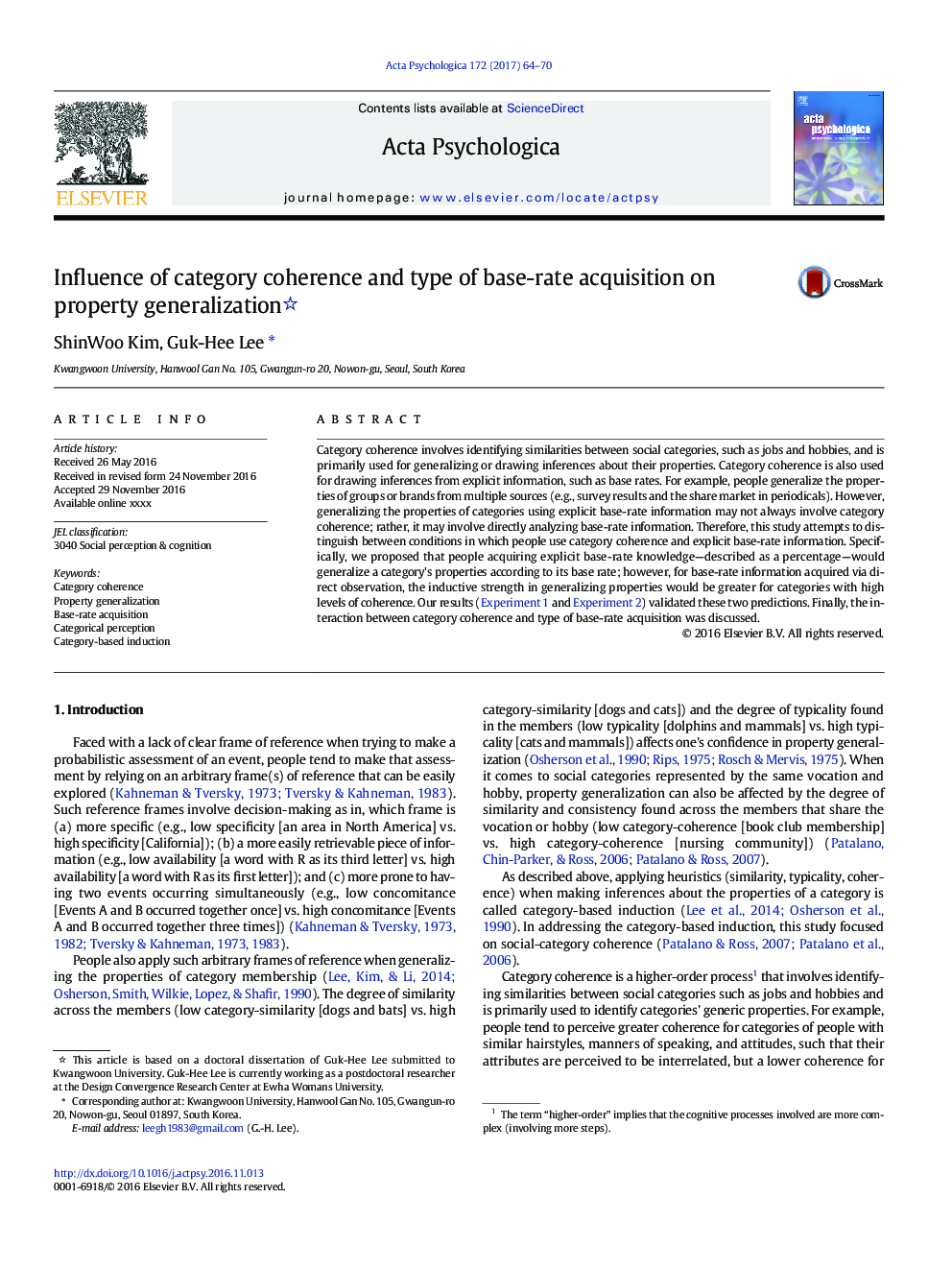| Article ID | Journal | Published Year | Pages | File Type |
|---|---|---|---|---|
| 5040255 | Acta Psychologica | 2017 | 7 Pages |
Abstract
Category coherence involves identifying similarities between social categories, such as jobs and hobbies, and is primarily used for generalizing or drawing inferences about their properties. Category coherence is also used for drawing inferences from explicit information, such as base rates. For example, people generalize the properties of groups or brands from multiple sources (e.g., survey results and the share market in periodicals). However, generalizing the properties of categories using explicit base-rate information may not always involve category coherence; rather, it may involve directly analyzing base-rate information. Therefore, this study attempts to distinguish between conditions in which people use category coherence and explicit base-rate information. Specifically, we proposed that people acquiring explicit base-rate knowledge-described as a percentage-would generalize a category's properties according to its base rate; however, for base-rate information acquired via direct observation, the inductive strength in generalizing properties would be greater for categories with high levels of coherence. Our results (Experiment 1 and Experiment 2) validated these two predictions. Finally, the interaction between category coherence and type of base-rate acquisition was discussed.
Related Topics
Life Sciences
Neuroscience
Cognitive Neuroscience
Authors
ShinWoo Kim, Guk-Hee Lee,
